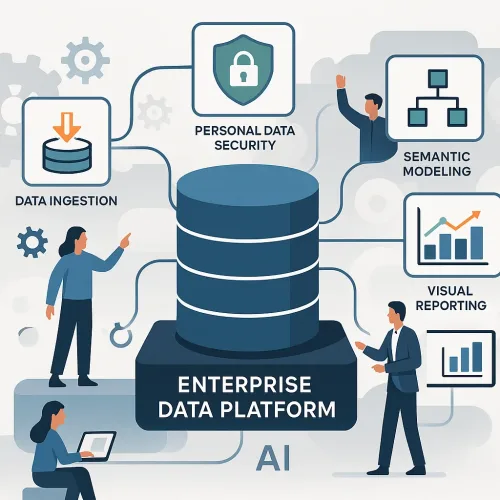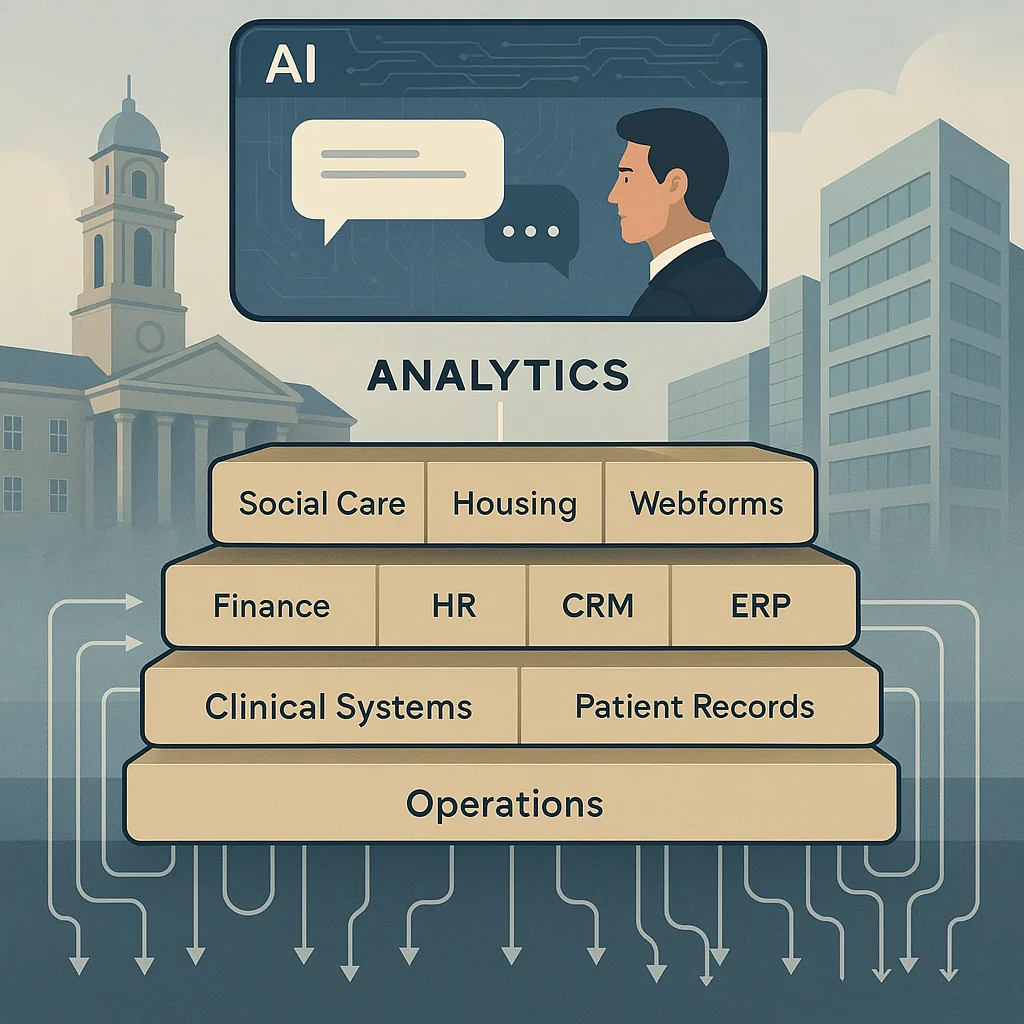
The Subtle Art of Building a Cohesive Enterprise Data Platform
In today’s data-driven economy, organisations are under increasing pressure to unify their data, extract insights, and remain compliant with evolving regulations like GDPR and the UK Data Protection Act (DPA). But building a cohesive enterprise data platform is not just about technology—it’s about architecture, governance, automation, and people.
The Vision: A Single Source of Truth
At the heart of any successful data platform lies the ambition to create a single source of truth. This means consolidating data from disparate systems into a unified, trusted, and accessible format. But achieving this is far from simple. It requires:
- A robust data architecture that supports high-frequency data ingestion (daily or even real-time).
- Separation of concerns, where personally identifiable information (PII) is stored and secured independently from transactional data.
- The ability to match and reconcile personal data across systems without compromising privacy.
Architecture That Enables, Not Restricts
A modern data platform must be modular, scalable, and secure by design. It should support:
- Automated data pipelines that handle extract, load, and transform (ELT) processes.
- Data quality validation at every stage—schema checks, null detection, referential integrity, and anomaly detection.
- Data retention policies aligned with GDPR and DPA, ensuring data is only kept as long as necessary and is disposed of securely.
From Raw Data to Semantic Models
Once data is ingested and validated, the next challenge is modelling. Semantic models (or data models) abstract the complexity of raw data and present it in a way that business users can understand and explore. This layer is critical for:
- Self-service analytics.
- Role-based access control, ensuring users only see data relevant to their responsibilities.
- Consistent metrics and definitions across reports and dashboards.
Visual Insights That Empower
The final layer is reporting and visualisation. Here, users interrogate data from aggregated KPIs to individual transactions, all within the guardrails of data governance. Reports must be:
- Dynamic and interactive.
- Policy-aware, enforcing data sharing rules.
- Performance-optimised, especially when built on shared semantic models.
The Human Factor: Skills That Are Rare and Costly
Building such a platform requires a diverse and highly skilled team:
| Stage | Key Skills |
|---|---|
| Data Access & Security | Cloud architecture, IAM, encryption, GDPR compliance |
| Data Engineering | Python, SQL, Spark, orchestration tools (e.g., Data Factory, Fabric Pipelines) |
| Data Storage & Modelling | Lakehouse architecture, Delta Lake, semantic modelling (e.g., Power BI, dbt) |
| Data Quality & Governance | Data profiling, lineage, cataloguing, policy enforcement |
| Visualisation & Insights | BI tools, UX design, stakeholder engagement |
These professionals are expensive and in high demand. But here’s the subtle truth: once the platform is built and automated, the need for constant human intervention drops dramatically. The platform becomes self-sustaining, with automated data flows, reusable models, and governed access.
A Smarter Way Forward: itelligent-i’s Subscription-Based Managed Service
Recognising the complexity and cost of building and maintaining such platforms, itelligent-i provides a financially viable, subscription-based model. This service includes:
- End-to-end implementation and delivery of data platform, data processes, data modeling and reports and more as described in this article
- A fully managed service that provides the necessary roles and skill sets to fully support all aspects of the platform and provide business support —without the need for customers to recruit or retain expensive, hard-to-find talent.
- Experienced technical managerial resource typically required to coordinate such teams.
- Strategic guidance to translate business requirements into deliverables, while maintaining architectural integrity, scalability, and cost-efficiency.
Conclusion: Build Once, Empower Many
A cohesive enterprise data platform is not just a technical achievement—it’s a strategic asset. It enables organisations to:
- Make faster, more informed decisions.
- Reduce compliance risk.
- Empower users with trusted, accessible data.
With partners like itelligent-i, organisations can now access the expertise and infrastructure needed to build and sustain such platforms—without the traditional overhead. The result? A smarter, more scalable path to data maturity.




